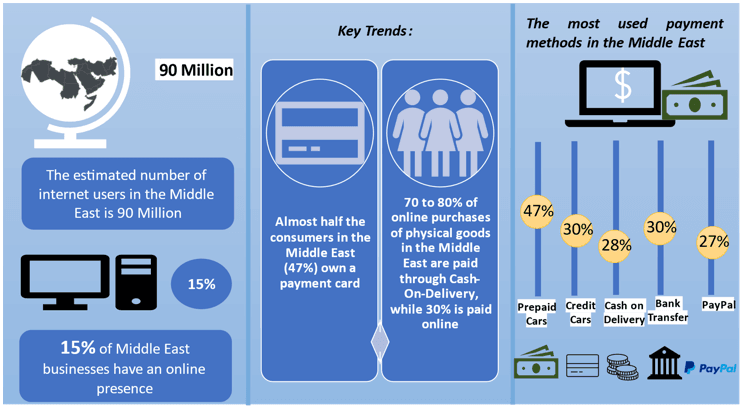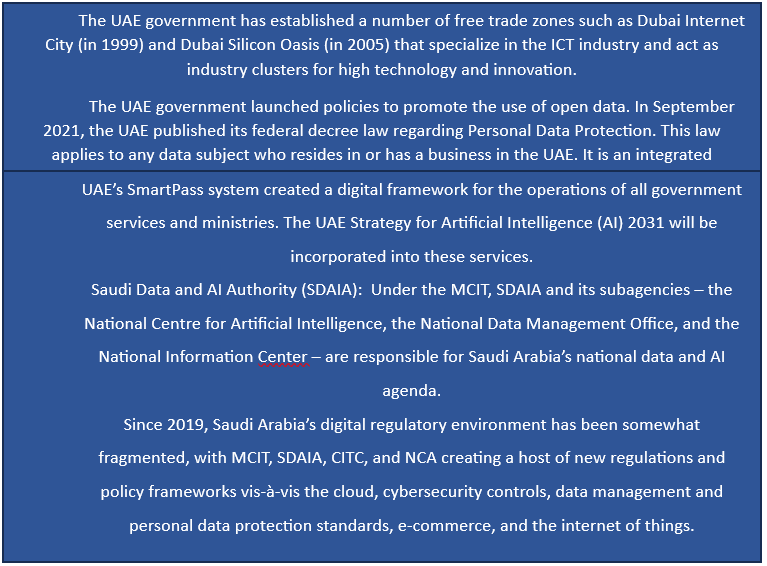MENA Smart Home Appliances Market Seen Soaring 28.8% Growth to Reach USD 16,460.9 Million by 2030, Projects Univdatos Market Insights
Author: Vikas Kumar
17 November 2023
Key Highlights of the Report:
- Smart home appliances often collect and transmit personal data. Laws in the MENA region, such as the UAE’s Data Protection Law, require manufacturers to ensure robust data protection measures and inform users about data collection and usage.
- Smart home appliances must adhere to product safety standards. Countries like Saudi Arabia have strict product safety regulations in place to protect consumers from faulty or dangerous devices.
- Some MENA countries, like Qatar, may require smart home devices to be compatible with specific platforms or protocols to promote interoperability and consumer choice.
- Regulations in many MENA countries aim to promote energy efficiency. Smart appliances must meet specific energy consumption standards to reduce energy consumption and environmental impact.
- Consumer protection laws in the MENA region, like those in Egypt, often require manufacturers to provide clear warranties and return policies for smart home appliances, ensuring that consumers have recourse in case of defects.
According to a new report by Univdatos Market Insights, the MENA Smart home appliances Market is expected to reach USD 16,460.9 Million in 2030 by growing at a CAGR of 28.8%. Smart home appliances have been a driving force with growing significant urbanization over the past few decades, with a growing number of people migrating to cities in search of better opportunities. According to the World Bank in 2021, the Middle East and North Africa (MENA), is already 64% urbanized. This trend has resulted in increased disposable income among urban dwellers. Moreover, many governments in the MENA region have launched initiatives aimed at reducing energy consumption and promoting sustainability.
Access Sample PDF Here- https://univdatos.com/get-a-free-sample-form-php/?product_id=47470
The MENA region has witnessed a surge in internet penetration and smartphone adoption in recent years. This increased connectivity has created an ecosystem conducive to the adoption of smart home technology. According to the Cybersecurity ASEE, in 2023, about 9.80 million smartphone users were present in UAE, with 9.32 million mobile internet users which is responsible for the extended growth of mobile commerce (which is around 44% of the total eCommerce sales revenue). Moreover, growing awareness of home security and safety such as smart locks, surveillance cameras, and fire detection systems, offer advanced security features and real-time monitoring capabilities. As awareness of these benefits grows, consumers are increasingly investing in smart home solutions to protect their families and property. The desire for enhanced safety and peace of mind is a significant driver of the smart home appliances market.
The report suggests that the rising number of singletons and growing demand for apartments has had a significant impact on the smart home appliances industry in the MENA region. Some of the ways in which this impact has been felt include:
- Government Initiatives Promoting Energy Efficiency: Many governments in the MENA region have launched initiatives aimed at reducing energy consumption and promoting sustainability. This includes subsidies for energy-efficient appliances and regulations requiring energy labels.
- Increased Connectivity and Internet Penetration: The MENA region has witnessed a surge in internet penetration and smartphone adoption in recent years. This increased connectivity has created an ecosystem conducive to the adoption of smart home technology. Consumers can control and monitor their appliances remotely using smartphones or voice assistants, making their lives more convenient and efficient.
- Rise of E-commerce: The rise of e-commerce platforms in the region has made it exceptionally convenient for consumers to access a diverse array of smart home appliances, including smart TVs, and smart washing machines, which contributes significantly to industry expansion.

Apart from this, in recent years, several governments in the Middle East and North Africa have implemented policies and provided funding support to enhance the growth of the smart home appliances industry. Some examples include:

These policies and funding support initiatives have helped to create a more favourable environment for the smart home appliances industry in the Middle East and North Africa and are expected to support the growth of the industry in the region in the coming years.
Conclusion
In conclusion, the smart home appliances market in the MENA region is being driven by factors such as urbanization, government support for energy efficiency, increased connectivity, and the growing importance of home security. These drivers are creating a favorable environment for the adoption of smart home technologies, and the market is expected to continue to grow as consumers seek more convenience, efficiency, and safety in their homes.
Key Offerings of the Report
Market Size, Trends, & Forecast by Revenue | 2023−2030
Market Dynamics – Leading Trends, Growth Drivers, Restraints, and Investment Opportunities
Market Segmentation – A detailed analysis by Pet Type, Food Type, and Distribution Channel
Competitive Landscape – Top Key Vendors and Other Prominent Vendors
Get a call back
